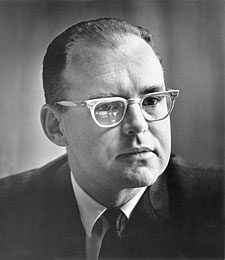 Moore’s Law created a stable era for technology, and now that era is nearing its end. But it may be a blessing to say goodbye to a rule that’s driven the semiconductor industry since the 1960s.
Moore’s Law created a stable era for technology, and now that era is nearing its end. But it may be a blessing to say goodbye to a rule that’s driven the semiconductor industry since the 1960s.
Imagine if farmers could go year to year knowing in advance the amount of rainfall for their area. They could plant their crops based on expected water availability.
That’s been the world that device makers, who are gathering this week in Las Vegas for the Consumer Electronics Show (CES), have long been living in, except that every year has been a good one. Droughts haven’t been part of the forecast, yet.
The tech industry has been able to develop products knowing the future of processing power, giving them the ability to map microprocessor performance gains to their devices accordingly.
In sum, the technology industry has been coasting along on steady, predictable performance gains.
But stability and predictability are also the ingredients of complacency and inertia. At this stage, Moore’s Law may be more analogues to golden handcuffs than to innovation.
Technology innovation, particularly in the last decade, has been “a succession of entertainment and communication devices that do the same things as we could do before, but now in smaller and more convenient packages,” wrote Robert Gordon, an economist, in a recent paper for the National Bureau of Economic Research on whether U.S. economic growth is over.
Moore’s Law, first described by Intel co-founder Gordon Moore in 1965, outlines how the number of transistors on a chip would increase at a regular pace. But the law was never indefinite and today, microprocessors are reaching a point where they can shrink no more.
The 14 nanometer silicon chips that are now heading to mobile phones and elsewhere may eventually reach 7 or even 5 nanometers, but that may be it.
When the European Commission looked at the changing landscape in high performance computing and the coming end of Moore’s Law, it saw opportunity. No longer will “mere extrapolation” of existing technologies provide what is needed, but, instead, there will be a need for “radical innovation in many computing technologies,” it said in a report this year.
Radical innovation beyond Moore’s Law will require “new scientific, mathematical, engineering, and conceptual frameworks,” said the U.S. National Science Foundation, in a recent budget request.
The NSF sees a need for new materials that can work in quantum states, or even “molecular-based approaches including biologically inspired systems.”
That new technology could be carbon nanotube digital circuits, which can deliver a 10x benefit in a metric that considers both performance and energy. A nanotube is a rolled-up sheet of graphene.
Another innovation that may replace or more likely augment microprocessors is quantum computing, something both NASA and the NSA are working on, as are most other major nations.
The end of Moore’s Law was a topic of discussion at the recent SC13 supercomputing conference. Experts see instability and much uncertainty ahead because of its demise.
Marc Snir, director of the Mathematics and Computer Science Division at the Argonne National Laboratory, and a computer science professor at the University of Illinois at Urbana-Champaign, told attendees alternate technologies are not yet ready.
Christopher Willard, Chief Research Officer at Intersect360 Research, said that the era of buying commercial off-the-shelf products to assemble a high performance system is coming to an end. “The market should then be entering a new phase of experimentation, and computer architecture innovations,” he said.
The demise of Moore’s Law is already evident in the high performance computing world.
If Moore’s law was still functioning as it did in the past, the U.S. would have an exascale system in 2018, instead of the early 2020s, as now predicted.
A 1 gigaflop system was developed in 1988 and nine years later work was completed on a 1 teraflop system. In 2008, work on a 1 petaflop system was finished. A petaflop is a thousand teraflops, or one quadrillion floating-point operations per second.
The problem with Moore’s Law isn’t as urgent for the device makers at CES as it is for HPC scientists.
But there is a shift in themes at CES away from smaller, faster, better to the Internet of Things. The underlying message is that true computing power is measured by the ability of a mobile platform to control and track a multitude of physical and virtual objects over a network. But that message that might work for just so long.
The problem that high performance computing faces in reaching exascale will also eventually visit on the device makers at CES, which was launched in 1967, two years after Gordon Moore delivered the paper outlining Moore’s Law.
The problem the device makers at CES face is that Moore’s Law ends for everyone.





